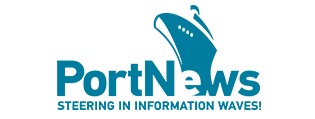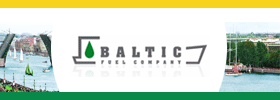North Sea Port posts record year since merger five years ago

With 73.6 million tons of cargo transhipment from maritime shipping (+7%) and 64.5 million tons from inland shipping (+7%) in 2022, companies in North Sea Port experienced their best year since the merger in 2018. Dry bulk continues to increase. The US replaced Russia as the biggest trading partner, according to the company's release.
Five years ago, Zeeland Sea Ports (Vlissingen and Terneuzen) in the Netherlands and the Flemish/Belgian Port of Ghent merged to form a single port. North Sea Port became the new brand name of the 60-kilometre-long cross-border Dutch-Flemish port. It instantly became one of Europe’s top ten ports.
In 2022, five years after the merger, North Sea Port posted the best year yet in its still fledgling history in terms of seaborne cargo transhipment: up 7%, a further 3% up on the previous record year of 2019. Imports increased by 6%, exports by 9%. The import-export ratio was 72%-28%.
Dry bulk again accounted for more than half of seaborne cargo transhipment in 2022: 54% (39.9 million tons, +10% compared to 2021). That growth came from commodities including oilseeds, crude iron, fertilizers and coal (+32%), for which additional stocks were built up due to EU sanctions in connection with the Ukraine-Russia crisis. Grain transhipment declined.
Liquid bulk accounted for 24% of the total in 2022 (17.6 million tons, +5%). The increase was particularly marked in the transhipment of biodiesel, diesel, liquid fertilizers and kerosene.
The share of break bulk was 14% (10 million tons, +5%). This increase is attributable to growth in the transhipment of steel plates and bananas (shift from containerised transport).
The roll on/roll off (ro/ro) segment grew by 5% (3.7 million tons, +2%). This rise was due to increased transportation of cars. The share of trailers remained the same.
Containers made up 3% of seaborne cargo transhipment (2.6 million tons, -9%; there was also a fall measured in TEUs, to 230,000 TEUs (-31,000 TEUs)). The reason for the decline was the reduced transportation of bananas in containers (shift to transportation as break bulk).
Broken down by commodity type, we see an increase in solid mineral fuels (including coal), petroleum and petroleum products, metal industry products, raw minerals and construction materials, fertilizers, vehicles and machinery. Agricultural products, food products, ores and metal residues and chemical products remained static.
Russia is no longer the most important trading partner in terms of seaborne cargo transhipment. With a 15% contraction (-0.9 million tons, total 5.4 million tons) as a result of EU sanctions, it fell back to second place, behind the United States, which saw a 27% growth (+1.3 million tons, total 6.3 million tons). The United Kingdom took third place (+4%, +0.2 million tons, total 5.2 million tons) followed by Brazil, Canada, Sweden, Norway, Spain and Finland, with France completing the top ten.
Trade with Ukraine halved. As a result of companies' search for alternative markets, trade with Canada (+31%), Australia (+123%), Algeria (+42%) and Germany (+42%) increased sharply.
Europe accounted for 57% of trade (-4%), North America for 15% (+3%), South America for 14% (-3%), Africa for 7% (+2%), Asia for 4% (+1%) and Oceania for 3% (+1%).
Inland navigation transhipment also set a new record in 2022: 64.5 million tons, up 7% (on top of a 9% increase in 2021). Imports increased by 8%, exports by 7%.The import-export ratio was 41%-59%.
Ro/ro transport by inland waterway vessels rose sharply to 0.5 million tons. Inland waterway breakbulk transhipment likewise increased dramatically (+40%, +1 million tons), while liquid bulk transhipment also grew (+19%, +5.5 million tons). Dry bulk shrank (-9%; -2.2 million tons), as did container transport (-9%; -0.2 million tons).
The record year for inland waterway transhipment does not stand in isolation. No less than 58% of all transport between the port and the European hinterland in all directions is conducted via inland shipping.
With a seaborne transhipment volume of 73.6 million tons and 64.5 million tons of cargo transhipped via inland navigation, North Sea Port recorded a total transhipment of 138.1 million tons in 2022, compared to 129.1 million tons in 2021. Over 9 million tons more, in other words. 2021 also saw an increase of more than 10 million tons (compared to 2020).
North Sea Port expects 2023 to be less of a bumper year, but still a solid one, with seaborne cargo transhipment experiencing similar volumes in the four quarters, well above 70 million tons.






